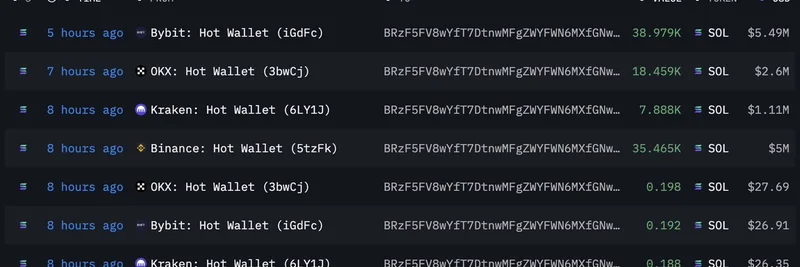In the wild world of meme coins, few stories capture the highs and lows quite like the recent saga of $REKT. If you've been following the crypto scene, you might have noticed $REKT taking a nosedive, dropping about 48% in value due to a series of on-chain liquidations. But what exactly went down? Thanks to a insightful clip from CounterParty TV's ThreadGuy Live, OSF (better known as @osf_rekt on X) breaks it all down in simple terms.
The Breakdown from OSF
In the tweet, OSF explains the mechanics behind the crash: "IMF allows for the borrowing and lending of memecoins, at one point 5% of the REKT supply was used as collateral. As soon as one liquidation hit, it created a liquidation cascade."
For those new to this, IMF stands for International Meme Fund, a decentralized credit protocol built on Ethereum. It lets users put up memecoins like $REKT as collateral to borrow stablecoins, such as USDS. This adds leverage to the already volatile meme coin market, amplifying both gains and losses.
What happened here is a classic example of a liquidation cascade. When the price of $REKT started slipping—due to market pressures or selling—the value of the collateral dropped below required levels. This triggered automatic liquidations, where the protocol sells off the collateral to repay loans. But with 5% of the total $REKT supply locked up as collateral, those sales flooded the market, pushing the price even lower and setting off more liquidations. It's like a domino effect in DeFi, where one bad move topples the whole setup.
According to additional details from OSF's posts, this wasn't the platform "liquidating" users maliciously—it's just how decentralized systems work. No bailouts, no interventions; pure market forces at play. In total, around 260 liquidations hit, affecting 126 borrowers and wiping out a significant chunk of positions.
A Quick Look at $REKT
$REKT isn't your average meme coin. It originated from the popular Rektguy NFT collection and has grown into a full-fledged ecosystem. Think brand merchandise, Rekt Drinks (yes, actual beverages), and even Rektguy AI tools. It's positioned as a "brand coin," emphasizing community, culture, and loyalty over pure speculation. But as we've seen, even strong communities can get caught in DeFi's leverage traps.
Before the crash, $REKT had seen impressive growth, at one point surging 70x. However, the integration with lending platforms like IMF introduced new risks. As OSF noted in another post, the platform enabled borrowing against holdings, but price action turned it into a liquidity nightmare.
Lessons from the $REKT Crash
This event highlights the double-edged sword of memecoin lending in DeFi. On one hand, it unlocks liquidity—letting holders borrow without selling their bags. On the other, it magnifies volatility. If you're dabbling in meme coins, here are a few takeaways:
- Understand Leverage: Borrowing against volatile assets like memecoins is risky. A small price dip can lead to total wipeouts.
- Monitor Collateral Ratios: Keep an eye on your loan-to-value (LTV) ratios to avoid getting caught in a cascade.
- Diversify Wisely: Don't put all your eggs in one meme basket, especially if it's being used as collateral across platforms.
- Stay Informed: Follow voices like OSF for real-time insights into these mechanics.
The crypto community has been buzzing about this, with reactions ranging from "degen dominoes" to comparisons with historical financial meltdowns like LTCM. It's a reminder that while meme coins bring fun and potential profits, they also come with real risks.
If you're interested in diving deeper, check out the full discussion on ThreadGuy Live featuring @notthreadguy and @osf_rekt. And for more on meme coin trends, stick around Meme Insider—we're here to keep you ahead of the curve in the blockchain space.



